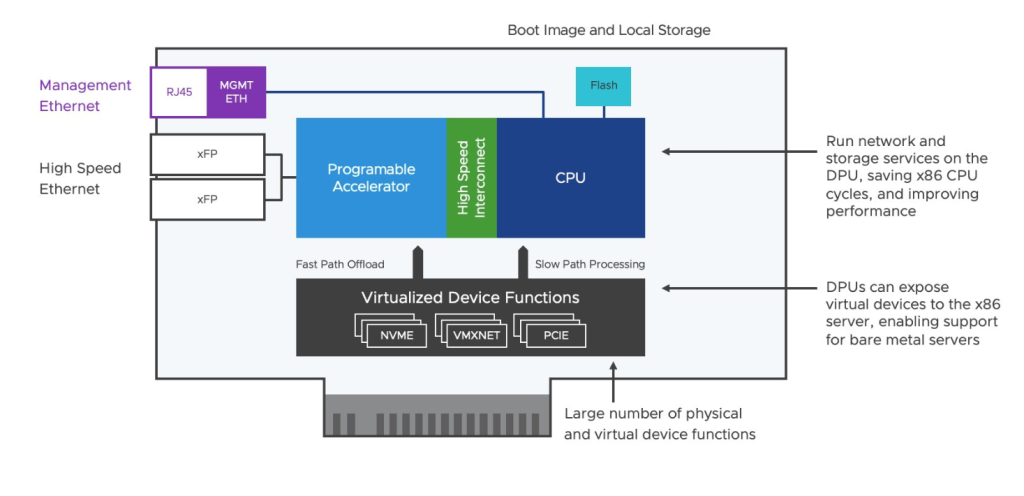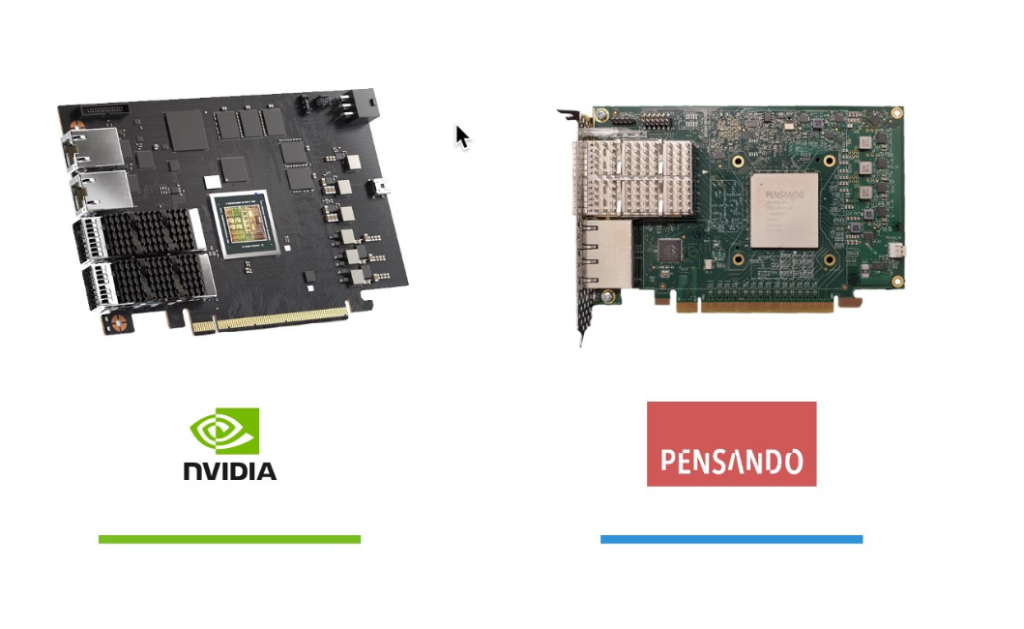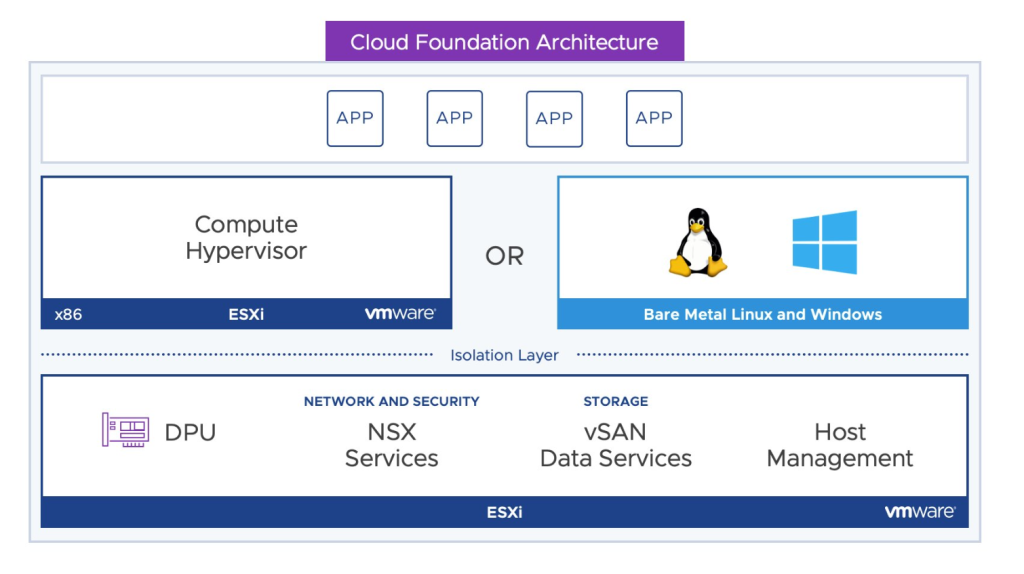VMware Application Acceleration
The Rise of DPUs in the Infrastructure
Most of us are familiar with the concept of a Central Processing Unit (CPU) and have also seen an increase in uptake for the GPU (Graphics Processing Unit) with many different use cases. GPUs are gaining ground in use cases such as Machine Learning, Deep Learning, Data analysis, and of course, gaming. But there is a newer technology that is quickly emerging in datacenters, and this is the Data Processing Unit (DPU).
What exactly is a DPU?
In simple terms, a DPU is a programable device with hardware acceleration as well as having an ARM CPU complex capable of processing data. Today the DPU is available as a SmartNIC (PCIe Form Factor) that can be plugged in to a server and help with several functions.
If we take a deeper look, the SmartNIC has an ARM CPU as well as a Programable Accelerator with a high-speed interconnect between the two. The SmartNIC also has 2 ports (or more) ranging from 10Gb to 100Gb depending on the vendor, and a separate ethernet port for management. The SmartNIC has a local storage which allows for users to install software such as… I don’t know… (You guessed it) a hypervisor like ESXi.

Currently we find vendors such as NVIDIA, and AMD/Pensando, among others, involved in this technology and it will soon be mainstream as these devices become more available to customers.

In essence, the DPU is a system on a chip (SoC) that allows for high performance network interfaces able to process data at much faster rates. But two of the key aspects of a DPU as it relates to VMware’s portfolio, include the capability to offload workloads from an x86 host to a DPU, as well as providing an additional layer of security by having an air-gapped environment running some of the processes. This work is currently being done at VMware with Project Monterey.
Under VMware’s Project Monterey, network processes such as network traffic, Distributed Firewall, among others, will be offloaded to the SmartNIC; meaning that not only are the resources being bypassed from the x86 server but also the traffic itself. Project Monterey will also facilitate the installation of ESXi and NSX on the DPU itself, and hence, offloading the required CPU resources from x86 to the DPU and not only freeing up resources on x86 for VMs to consume, but also providing an extra layer of security.

For more information about project Monterey, please refer to the following content:
Discover more from VMware Cloud Foundation (VCF) Blog
Subscribe to get the latest posts sent to your email.





